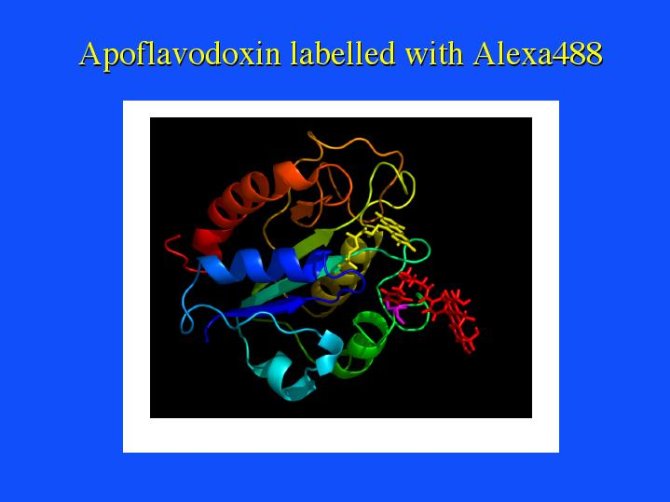Project
Biochemical and Biophysical characterisation of flavodoxin folding
Adrie Westphal has a broad training in Biochemistry, Molecular Biology and Biophysics and uses this experience to study among others protein folding. With the purpose of elucidating flavodoxin folding he generates mutant variants of flavodoxin, covalently attaches fluorescent dyes to the protein (see Figure) to enable single-molecule optical studies, he purifies proteins, isotopically enriches proteins, and uses various fluorescence techniques (like fluorescence correlation spectroscopy, time-resolved Förster resonance energy transfer spectroscopy, time-resolved fluorescence decay and fluorescence anisotropy, and time correlated single photon counting spectroscopy) in his study of flavodoxin folding.
Adrie Westphal has experience in using fast reaction kinetic techniques like stopped flow and rapid quench to study the behaviour of proteins. In addition, he applies Molecular Dynamics methods to study the behaviour of proteins. Adrie Westphal is involved in all individual projects on flavodoxin folding.
